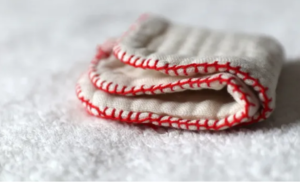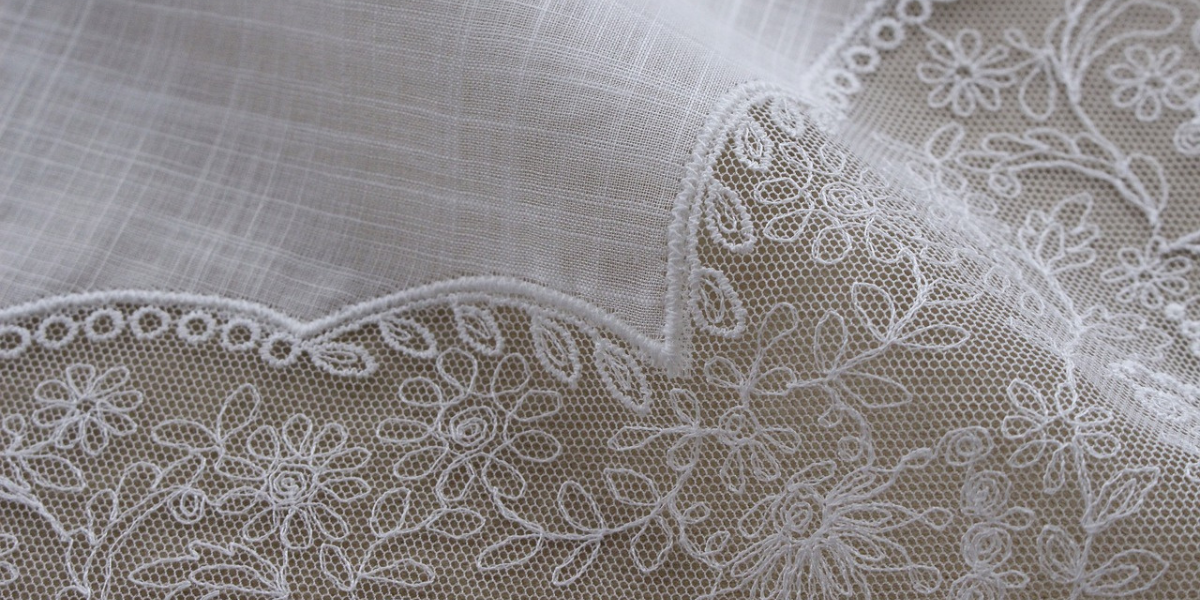Handkerchief with Standard Dimensions have kept humans dry-eyed and germ-free for centuries, quietly assisting in moments both elegant and awkward. A simple square of cloth, capable of absorbing tears or catching an unexpected sneeze.
While forms and fabrics have evolved over the decades, the purpose remains- to discreetly address the inevitable secrets that our faces betray. From fine linen to cotton prints, these humble helpers are ever at the ready regardless of size or shape.
But what defines an appropriate size? How large is too large, and how small too small to serve its purpose politely? Families and fashion have determined standardized dimensions through the years, though flexibility exists depending on need and occasion.
An overview of common sizes allows judicious selection for any situation likely to demand a handkerchief’s aid. So whether shielding a sob or stifling a sniffle subtly, these measurements make a match between mission and material straightforward.
Why Use a Handkerchief When You Have Tissue?

Handkerchiefs certainly have their uses, whether wiping perspiration from one’s brow or dusting off delicate surfaces without fear of harming them. Their longevity renders them far more eco-friendly than disposable paper substitutes that clog landfills after only brief utility.
It is true that many in recent decades have favored tissues when concerns of illness arise, viewing them as more sanitary to carry and employ. Yet germs, like stains, can be banished from handkerchiefs with a simple wash, allowing their reuse and reducing waste.
While hygiene is important, and some find tissues more convenient for certain applications, handkerchiefs hold advantages of their own. Requiring no replacement, they spare our landscapes from needless mounds of debris.
Softer against skin, handkerchiefs also comfort where rougher papers might chafe or scratch. With care in cleaning, a handkerchief serves faithfully until ragged retirement, far outlasting its single-use alternatives. Both have their place, but for longevity, gentle usage, and green credentials, the handkerchief retains enduring appeal.
Different Sized Handkerchief And Their Dimensions
There are many diverse materials and dimensions for handkerchiefs. However, four sizes are generally used more regularly – small, large, extra large, and standard.
Small hankies typically measure 8×8 inches, ideal for light applications like tearing eyes or drying sweat. Larger handkerchiefs around 13×13 inches suit daily living and any necessity.
Extra large, sometimes called supersized, can reach 21×21 inches, bigger than expected for the classification of large. Standard sized handkerchiefs, maintaining balance among variants, come around 12×12 inches, a usual size for easy access.
Though needs differ, these four types cover basic requirements. Small perfectly fits minor tasks requiring quick action. Large serves general living comfortably.
Extra large provides maximum coverage for messes. And standard offers convenience for average uses. Whichever the user chooses depends on personal preference and circumstance. The assortment in materials, sizes and patterns supplies diversity meeting diverse wiping wants.
Standard Handkerchief Size For Men And Women

Handkerchief dimensions fluctuate in accordance with fabric and maker. For gentlemen and ladies, hankies are also diverse in measurement. As noted before, the usual measurement is 12 x 12 inches (30.5 x 30.5 cm) – this remains the frequent size for men’s kerchiefs.
Women’s handkerchiefs, however, have a tendency to be smaller and can fluctuate between 8 x 8 to 10 x 10 inches (20.3 x 20.3 cm to 25.4 x 25.4 cm).
While size is not the sole differing factor, gentlewomen regularly opt for more compact textures that suitably fit within pockets or handbags. Meanwhile, gentlemen occasionally prefer somewhat more voluminous coverings capable of absorbing perspiration when needed during strenuous activities or warm conditions.
Why Do Handkerchief Sizes Differ
Handkerchief sizes are not uniform, as their purposes and uses diverge. Pocket squares, meant as male fashion accents, tend to be petite due to confined carrying spaces. Yet napkins demand dimensions more expansive, vital for wiping effectively.
Furthermore, gentlemen’s hankies often dwarf the dames’, understandably so. A lady’s lightweight covering calls for compactness to squeeze into slender pockets or cramped clutches.
Bulky bloomers would burden her bustling about and disappoint her desire for convenience on the go. Nevertheless, us chaps can lug around larger linens and put them to practical use without issue.
How Big Is A Handkerchief?
Now how sizable is a handkerchief precisely? Handkerchiefs range in measurement from compact squares that comfortably nest in a gentleman’s breast pocket to rather more generously proportioned specimens ample enough to undergo improvised duty as a kerchief for the head or face.
A standard handkerchief holds dimensions matching a common ruler found in most desks and drawers – twelve inches on each side. What other everyday items also measure precisely one foot? In contrast, a petite handkerchief shares measurements with a humble pair of knitting needles – a compact eight inches across and along its edges.
Thus, if ever fabric must be cut for a customized hankie, look no further than standard rulers, knitting needles, or comparable objects for ad hoc templates to craft handkerchiefs of precise and varying sizes to suit any need or fancy.
Different Types of Handkerchiefs Based On Usage
While handkerchiefs are commonly utilized for wiping away perspiration or clearing the nose, they are indeed capable of serving in diverse functions. Consider the assorted manners in which bandanas are employed contingent upon their wielders’ pursuits and necessities.
Whether softening tears of sorrow or catching remnants of merriment, these versatile cloths have undoubtedly earned their keep through versatility across epochs. Below we investigate some classifications of handkerchiefs as defined by how and by whom they are implemented.
1. EDC Handkerchiefs

Daily carry handkerchiefs, commonly referred to as EDC hankies, fulfill a variety of purposes for their carriers on a regular basis. For some, they are principally used to clear nasal congestion or pat facial perspiration. Others rely on the compact cloth squares to scrub unfamiliar fingerprints from recently handled devices or wipe spills from trousers before the stains can set.
Additional functions involve drying spectacles following accidental immersion in beverages and absorbing moisture from palms in public lavatories. Versatile and lightweight, the pocket-sized pieces of linen or cotton fabric prove their worth time and again for those who make room for them among everyday essentials.
2. Pocket Square Handkerchiefs

Using handkerchiefs as a pocket square is an age-old tradition embraced by sartorial gentlemen. You must skillfully fold the kerchief into a tailored square to complement your attire.
While some see such accessories as unnecessary flourishes, the man of impeccable style recognizes handkerchiefs as elegant accoutrements that breathe life into an ensemble.
Whether clasping formal suits or relaxed casual wear, a carefully arranged pocket square allows one to put a refined twist on appearance with just a simple square of fabric.
3. Handkerchief as Bandanna
While a bandana is commonly worn around the forehead or neck for decoration or to wipe sweat, a handkerchief can fulfill various functions limited only by one’s creativity. Some choose to knot colorful cotton squares atop their heads for protection from the sun’s glare or to express individual flair.
Others twist printed silks into headwraps securing loose locks from the breeze. Still, many find solace in the simple nestling of a soft cloth within a palm, bringing comfort through memories woven within its fibers. Like well-worn friends, our accessories bear stories through the years if we care to decipher their tales.
4. Napkin Handkerchief
Napkins, whether fabric or paper, serve to wipe grubby fingers and lips during meals. A handkerchief too can absorb crumbs and grease from the face or palms. Such hankies, though, tend to be more generously sized than those employed merely for nose blowing.
While napkins see use clearing away morsels, our hands often retain residue no square of cloth can lift. At banquets and buffets, where plates overflow and napkin racks stand empty, it falls to our sleeves to play host to the remnants of our feasting.
5. Dog Handkerchiefs

People who own dogs love bandanas for their furry friends. Different colored handkerchiefs not only make canine companions fashionable but also serve protective functions.
Owners revel in dressing darling dogs in darling do-rags. While some pups parade proudly patterned pieces of fabric, others require non-flashy neckwear for pragmatic purposes like identification. Whether frivolous fashion flairs or functional necknets, bandanas bond both breeds.
6. Handkerchiefs in Symbolism
Handkerchiefs held myriad meanings in days past, conveying marital devotion as well as one’s social rank or an infant’s blessing at baptism. Even now, handkerchiefs retain significance as tokens gifted at weddings to ushers of fortune.
The wedding handkerchief endures as a memento to tenderly recall the nuptials’ cherished moments. Though fashions fade and trends come and go, traditions like presenting handkerchiefs on one’s wedding day survive to remind us of significant life events through simple fabrics and meaningful memories intertwined.
What Type Of Fabric is Best For Handkerchiefs?
Handkerchiefs can be fashioned from an assortment of materials. Often they are crafted from cotton, silk, linen, a cotton blend, synthetic fibers, and additional options. Of all these textile types, cotton proves to be the ideal fabric for handkerchiefs.
Cotton stays light and allows absorption while lasting longer than more delicate choices. Some opt for silk handkerchiefs appreciating their shine though cotton withstands moisture better. Others select linen recognizing its breathability or blends taking advantage of varied qualities.
Though convenient, synthetics rarely match natural fibers for comfort. Overall, cotton delivers the right balance of gentleness, endurance and utility making it a go-to selection for handkerchiefs.
How To Select The Size And Fabric for Your Handkerchief
While handkerchief choice depends largely on intended function, fabric and dimensions offer creative freedom. Larger square hankies ranging from ten to seventeen inches suit making pocket accents, with finer silk or chiffon styles highlighting one’s sartorial panache. Compact cotton kerchiefs occasionally dotting of tears or catching of errant sneezes serve genteelly.
Altogether, the handkerchief constitutes a humble though personable accessory, bringing linen levity to lips, limbs, and lives through versatility in material and measurement befitting its multitude of meritorious manners of use.
Finer fabrics suit protective shielding of expressions of emotion or wiping of perspiring brows on steamier summer days. Sturdier cotton or blended weaves also prove practical for more intensive applications. Through variations in size and material, handkerchiefs showcase one’s creativity within boundaries of intended use.
Conclusion
From wiping away sweat that trickled down a weary brow, spills on one’s clothing throughout a chaotic day, or remnants of makeup applied in haste that morning, to shielding the nose and mouth from pervasive dust stirred by the endless traffic along dusty roads, handkerchiefs play a indispensable part in daily life. The dimensions and material of the linen square must suit its directed function whether genuinely used or simply tucked into a pocket as a habit.

